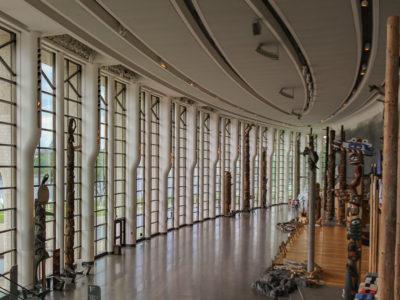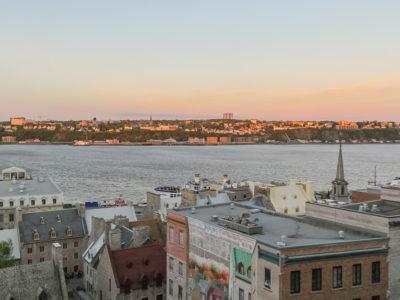I’ve said it before, other than Parliament Hill (the jewel of the crown, in every sense), not much of Ottawa’s architecture will sweep you off your feet.
But before you flee Wellington Street to immerse yourself in Ottawa’s museums and parks, head one block south to the pedestrianized Sparks Street Mall.
The life and blood of the city ran through this street from the late 19th century up to the mid 20th century, before losing its lustre. In an effort to preserve the architecture that witnessed its former glory, its beautiful buildings have been preserved as a cultural heritage.
And a multi-year revitalization project is in the works.
Disclosure: This post contains some affiliate links. If you make a purchase through those links I will earn a commission at no additional cost to you (zero, nada). To check the full disclaimer, click here.
Sparks Street is one of the best sites to learn some curious and relevant facts about Ottawa’s history through its architecture. Check out these historic buildings:
The Brouse Building
(#183 Sparks St.). Want to know how the typical commercial buildings looked back in the early 1900s? You’re looking at it. A combination of Romanesque style and Italianate design.
(Architect: George F. Stalker)
The Bank of Montreal
(#161). Put your hands together for the recipient of the Royal Architectural Institute of Canada’s Gold Medal for this magnificent work completed in 1932. It brilliantly integrates a modern version of the Beaux-Arts style with Art Deco details.
(Architect: Ernest Barrott)
The Poulin’s Dry Goods Building
(#156-158). Another landmark of Ottawa’s commercial life at the end of the 19th century. It’s a great example of Italianate style, with top-rounded windows and reinstated cornice and storefronts dating back to 1872.
(Architect: William Hodgson)
The Hardy Arcade
(#130). A commercial/residential building with a clean-cut stone facade that screams Art Deco, including the lettering. Beyond the rather simple exterior, there are two remarkable things about it.
It’s one of the few surviving arcades (the interior mall is from the mid-1930s), and up to the 1960s, it was the location of the studio of photographer Yousuf Karsh. Ernest Hemingway, Albert Einstein, Audrey Hepburn, Georgia O’Keeffe, all were in front of his lens. The famous image of Winston Churchill you see in the British five-pound bill? He was behind that portrait.
(Architect: Davidson and Smith)
The Bank of Nova Scotia
(#125). No longer a bank, but a branch of the Library of Parliament. It was designed in 1924 in the Beaux-Arts style, with decorative elements that make it more Canadian than bagged milk.
(Architect: John Lyle)
The Saxe Building
(#75). One of the first high-rise commercial developments on Sparks Street.
Seven floors do not qualify as a high-rise today, but back in 1909, when three floors were the norm, it was like Whoa!
The facade may not have the grandiosity of Beaux-Arts buildings like The Canadian Bank of Commerce (#119), but look carefully and you’ll notice the sculpturesque effect of the semi-glazed terracotta. Quite interesting…and quite hard to repair.
(Architect: Keefer & Weekes)
The Hope Building
(#61-63).This was the first privately owned commercial high-rise in the area, and it’s full of symbolism.
Back in 1910, it had offices for rent and a bookstore with religious books, which is why you read at the top Bible House. You’ll see greek meanders from the bottom to the top, where it’s crowned with a made in England terracotta statue symbolizing Hope, an allegory to the Greek mythological figure.
Hope is also a theological virtue, and the name of the original owner, James Hope.
(Architect:W.E. Nofke)
The Imperial Bank of Canada
(#62). In the mid-1930s people came here for the money, now they come for the food. The Riviera is one of Ottawa’s upscale restaurants.
The Art Deco ornamentation is preserved inside its monumental interiors with high ceilings, and outside where lion’s heads and maple leaves carved in stone crown the one-storey building.
The Ottawa Electric Building
(#56). Its history is linked to the remarkable achievements of its first owners, Warren Soper and Thomas Ahearn, who built the first hydro plant on the Ottawa River in 1881.
This brought a whole lot of other “firsts”, not only in Ottawa but in the world:
- First city in the world to have its street lights powered by electricity (1885).
- First streetcars in the world with electrical heating (1893). Must have felt good not to feel like you were riding in a fridge.
- First banquet in Canada entirely cooked with electricity (1892). This was revealed to the 100 guests after they finished their multi-course meal served at the Windsor Hotel.
(Architect: John Albert Ewart)
The Chambers Buildings
(#50). I love this elegant complex at the corner of Sparks and Elgin Street, with its vivid red brick colour and all its arches and windows softening the massive rectangular-ish mass.
First, you’ll see the Scottish Ontario Chambers (50 Sparks St.), built for the offices of the Canadian Pacific Railway in 1883, in Victorian Italianate style. (Architect: William Hodgson)
Next to it (40 Elgin St.), like a soft ballad performed between two hard rock songs, the same architect designed The Bell Block (1867). The facade was retained and the space serves as the lobby of the complex, which includes a 14-storey building on the Queen Street side.
It won an Award of Excellence from the City of Ottawa.
And last, you’ll see the Central Chambers National Historic Site (42-46 Elgin St.), a beautiful example of Queen Anne Revival style. The arches, the bay windows, the pediments, and all the decorative elements live in glorious harmony like a perfect little family from a 1960s TV series.
Everything is surrounded by multicoloured decorative stone. Sublime.
(Architect: J.J. Browne)
I hope you enjoy this mini-tour through some of Ottawa’s heritage buildings on Sparks Street and learned some historical facts. I was surprised about all the “firsts” regarding electrical power.
What historic building or story did you like the most? Don’t forget to check out the buildings in Parliament Hill.
YOU MAY ALSO WANT TO READ
BOOKING FLIGHTS AND ACCOMMODATIONS
Book your flight without losing your shirt
We check Momondo to find great deals to book our flights. Also, check Great Escape: it combines the listings from Expedia, Kiwi, Kayak, (and Skyscanner on the premium service) to find the best airfares.
To find a place to stay for less
Booking.com: this site combines everything under the sun. You’ll find hotels, apartments, B&B, hostels, rooms, etc., with all sort of filters to make your search a breeze.
Hotwire: the first site I check when we plan to stay at a hotel for a few nights. You can save anything from 20% to 60%. Use the search filter to find what you want and you’ll end up with three listings that match your criteria. You’ll know which one you’ll get after you book. If you can handle a little bit of uncertainty you can score big savings.
House Sitting: you take care of people’s pets and house for free while staying for free. It’s the closest thing to experiencing a place “like a local”. But it comes with responsibilities… Are you an animal lover? It may become your new way to travel.
To get travel insurance
SafetyWing: travel medical insurance that gives us peace of mind knowing that we’re covered in case of emergency. It’s convenient, affordable, and suitable for digital nomads who spend a long time outside their home country.
Check the full list of travel resources on my Resource Page for more options and savings


